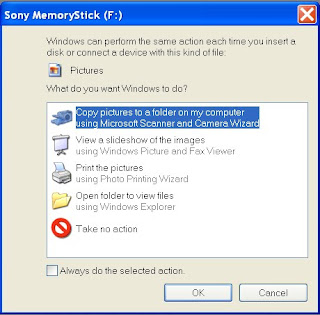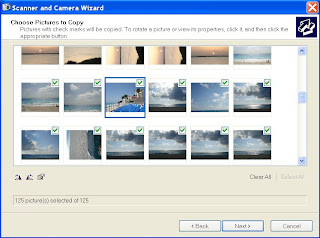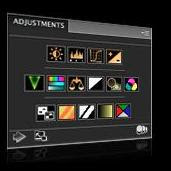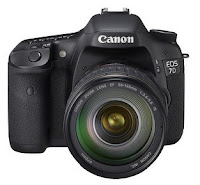Camera Raw
Though there are some important differences. Raw is just another file format like JPEG or TIFF. The major difference is that Raw files contain unprocessed data from the camera sensor. Before Raw data can be viewed as an RGB image, they have to undergo a number of processes. If you shoot in an RGB format, such as TIFF or JPEG, this processing is done in the camera.
Adobe Photoshop Lightroom 3 BETA
Adobe Photoshop Lightroom is an image management application database which helps in viewing, editing, and managing digital photos. Lightroom is designed to assist both professional and amateur photographers in managing thousands of digital images and doing post production work.
Lightroom 3 beta (Click Here to Download) delivers a preview of new tools that will be in Lightroom 3, including more intuitive importing,  unparalleled noise reduction and sharpening tools and enhanced slideshow capabilities. Flickr users now have direct access to their accounts from within Lightroom and can drag and drop images directly into their Photostreams. Flickr Pro account users can automatically synch their images and even view comments made on Flickr directly within the Library. Also offers advanced output options, including the ability to export slideshows as videos with audio and title screens that can be posted to video-sharing sites or optimized for mobile media.
unparalleled noise reduction and sharpening tools and enhanced slideshow capabilities. Flickr users now have direct access to their accounts from within Lightroom and can drag and drop images directly into their Photostreams. Flickr Pro account users can automatically synch their images and even view comments made on Flickr directly within the Library. Also offers advanced output options, including the ability to export slideshows as videos with audio and title screens that can be posted to video-sharing sites or optimized for mobile media.
- Brand new performance architecture, building for the future of growing image libraries
- State-of-the-art noise reduction to help you perfect your high ISO shots
- Watermarking tool that helps you customize and protect your images with ease
- Portable sharable slideshows with audio—designed to give you more flexibility and impact on how you choose to share your images, you can now save and export your slideshows as videos and include audio
- Flexible customizable print package creation so your print package layouts are all your own
- Film grain simulation tool for enhancing your images to look as gritty as you want
- New import handling designed to make importing streamlined and easy
- More flexible online publishing options so you can post your images online to certain online photo sharing sites directly from inside Lightroom 3 beta.
click here to download Adobe Photoshop Lightroom 3 BETA for Adobe Labs
Erase and format the memory card


Download images from digital camera to the computer
Many of digital camera came with a USB cable, use the USB cable connect to the camera UBS port and plug other end to the your computer USB port, once your turns on the camera, your computer will detect as an external hard drive contains pictures. Select Copy pictures to a folder on my computer using Microsoft Scanner and Camera Wizard.
I used the Sony Cyber-shot for demonstration

Now you can select the pictures that you want to save into your computer or you can select all

Click Next and allow you choose a place (any folder you want) to save your group of pictures, by default is under C:/My Documents/My pictures/pictures

Click Next again when chose the place to save them, in few minuters all your pictures will save in your computer.
Adobe Photoshop CS4

New unrivaled power of Adobe Photoshop CS4 software through a more intuitive user experience, greater editing freedom, and significant productivity enhancements. Photoshop CS4 features new ways to make image adjustments and create masks, which provide more intuitive access to the most powerful editing techniques, rewarding your creative experimentation and helping you achieve desired effects more efficiently.
New Features:
Canon EOS 7D

Features:
- 18 MP APS-C CMOS sensor
- 8 frames per seconds continuous shooting
- 1080p Full HD video recording (1920 x 1080): 30p (29.797 fps)
- 3.0 inch LCD Display in viewfinder with 100% fielf of view and 1.0 of magnification
- new 19-point, all cross-type AF system
- Magnesium body with shutter durability up to 150,000 cycles and exclusive dust and weather resistance.
Canon EOS 1Ds Mark III
 The Canon EOS-1Ds Mark III is an engineering tour de force which, true to the EOS-1 legacy, redefines the state of the art in no uncertain terms. An entirely new 21.1-megapixel full-frame Canon CMOS sensor delivers astounding image quality and creates new photographic possibilities. Dual "DIGIC III" Image Processors work in tandem to speed up data handling and camera operation, while further refining imaging performance. Tough, high-durability body and shutter designs, combined with the unique EOS Integrated Cleaning System, set new standards for professional dependability. Cutting-edge features-such as a large 3.0-inch LCD monitor with Live View Function, and a fast, precise 45-point AF system-make the EOS-1Ds Mark III powerful and versatile. And, of course, the EOS-1Ds Mark III is part of the unparalleled EOS System, which, with more than 50 EF lenses, 15 interchangeable focusing screens, and extensive wireless remote control and lighting accessories, is the most advanced and powerful digital photography system in the world.
The Canon EOS-1Ds Mark III is an engineering tour de force which, true to the EOS-1 legacy, redefines the state of the art in no uncertain terms. An entirely new 21.1-megapixel full-frame Canon CMOS sensor delivers astounding image quality and creates new photographic possibilities. Dual "DIGIC III" Image Processors work in tandem to speed up data handling and camera operation, while further refining imaging performance. Tough, high-durability body and shutter designs, combined with the unique EOS Integrated Cleaning System, set new standards for professional dependability. Cutting-edge features-such as a large 3.0-inch LCD monitor with Live View Function, and a fast, precise 45-point AF system-make the EOS-1Ds Mark III powerful and versatile. And, of course, the EOS-1Ds Mark III is part of the unparalleled EOS System, which, with more than 50 EF lenses, 15 interchangeable focusing screens, and extensive wireless remote control and lighting accessories, is the most advanced and powerful digital photography system in the world.Features
- 21.1 MP full-frame CMOS sensor
- 3.0 inch LCD display with Live View and seven brightness settings
- 5 frames per second at shutter speeds 1/500 second or faster (for bursts of up to 45 Large/Fine JPEGs or 15 RAW images)
- sRAW mode; 35-zone metering system; 45-point AF; integrated Self-Cleaning Sensor Unit
- Powered by LP-E4 lithium-ion battery pack; stores images on CF, SD, or some SDHC memory cards
Make money with your photographs

Kevin’s 100 Abandoned Houses project is a collection of images showing the derelict homes of his city. His images sell as prints, his online gallery earns ad revenue and his work has been highlighted in the New York Times and on ABC. Best of all, the attention his images have generated have helped him to bring donations to local charities that work in the subject his images portray.

Shutterstock .com wants your photos, and you will get pay if someone download your photo, $0.25 per download, That means that at just 2000 downloads/month, you can earn $500 (US) per month! Many of our photographers earn this and more every month.
Mpix.com - create your albums, Prints, sharing, buy prints or even Present and Sell them.
smugmug.com - Your Photos & videos look better here, password-protect your galleries, no reducing resolution of your photo, it's not a free site.

How to take good picture with Digital camera
Getting know your Camera - There was a manual came with the Camera when purchased it, most of us put it away and ignore it. Go over the manual, it ways tell something about your camera that you would not config out on your own, and Keep it handy in case you need to review it.
Composition - properly framing your subject, choosing the right backgrounds are important because they help set the mood for the shot and tells a story; Also be used to evoke an emotional response from the viewer. The first thing to decide before taking a picture is what's the main subject. To compose your shot, you either need to move your subject around or get closer yourself. most of times simple background and pattern would make better picture.


The Law of Thirds - The rule states that an image should be imagined as divided into three horizontal and three vertical (like a tic-tac-toe game), and that important compositional elements should be placed along these lines or their intersections.
This photograph of a sunset taken in the Thousand Islands demonstrates the principles of the Law of Thirds
Focus / Exposure Lock - point to the subject then press the shutter button down halfway, the camera locks the auto focus and the exposure. Once you do that you can move the camera around and recompose your photo the way you want it without change the focus and the exposure. When you see what you want in the LCD or viewfinder, press all the way down to take your picture.
Flash - you need to ture on the flash mode when taking picture indoor or place has not enough light, and all lights need to be switched on if possible. If you take picture outdoor sunny day, try to not use the flash, take advantage of nature light, it provides some of the best lighting for great shots with more vivid color and detail, just remember to take it with the sun behind you. This prevents loss of detail caused by bright light.

Steady the camera for sharp picture - The key to getting sharp photos is keeping your camera steady while pressing the shutter button. Digital cameras are so light that special care is required to hold them steady during shooting. Squeeze the button very gently, making sure you don't jerk the camera as you press the shutter button. Try to hold the camera with two hands of use the tripod.
Check your picture - Digital camera has LCD display that you can look at the photos immediately after you take them, if you don't like it, make some adjustment and take another one. The more you take, the bigger improvement you will get, So go out there, shot more and have fun.









